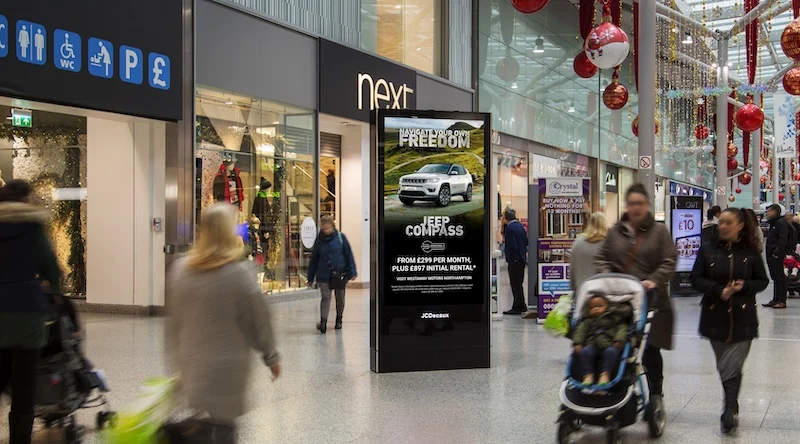In the ever-evolving landscape of advertising, it’s becoming increasingly apparent that relying solely on social media platforms for ad campaigns is no longer a surefire way to secure brand success. Recent stories of newer brands, like Hello Bello, Winc, Allbirds and Outdoor Voices, relying solely on social media advertising and failing, serve as stark warning. To avoid the untimely fate of many of these brands, adopting an omni-channel media mix is the best way forward for an impactful ad campaign which generates high sales and brand recognition.
Social media platforms have become less efficient
In some cases, if solely relied upon, social media platforms are potentially detrimental to the survival of a brand. The culprit? Apple’s privacy updates, cookie restrictions for user privacy and data consent. These privacy measures have had a profound impact on the effectiveness of advertising on social media platforms, hindering the once-robust capabilities of social platforms to target users with surgical precision. As a result, ad campaigns running only on social media have become significantly less efficient, and brands are struggling to achieve the same rapid growth they once enjoyed.
The bankruptcy filing of Hello Bello, a brand backed by celebrity powerhouses Kristen Bell and Dax Shepard, paints a stark picture of the aftermath. Despite their star-studded endorsement and distribution in major retail giants like Walmart, they couldn’t escape the impact of the changing advertising landscape. In a surprising twist, Meta Platforms, Facebook’s parent company, emerged as one of Hello Bello’s top creditors in their bankruptcy filing. This further underscores the challenges that brands face when placing all their advertising eggs in only a social media basket.
The rise of omni-channel media mix
The omni-channel media mix, a tried and tested approach, integrates diverse advertising efforts across various platforms, both digital and traditional, creating a holistic advertising strategy that reaches consumers through multiple touchpoints. One shining beacon within this strategy is programmatic digital out-of-home (prDOOH) advertising. Unlike its social media counterparts, prDOOH stands tall as a safe broadcast medium, unaffected by the cookie restrictions and privacy updates plaguing social media platforms. PrDOOH embraces the power of first exposing consumers to campaigns in the broadcast, public environment, priming the campaign for effective retargeting on personal screens, seamlessly integrating into the lives of consumers without invading their privacy.
This strategy allows for nuanced, personalised advertising experiences without compromising user data or privacy. It leverages retargeting strategies on personal screens as part of a multi-channel campaign, ensuring that advertising messages reach the right audience, at the right time, and in the right context.
In VIOOH’s recent annual State of the Nation report, a key request from advertisers was to understand how prDOOH fits within multi-channel campaigns, and how to best measure its impact. In partnership with Yahoo Advertising, last month we released a white paper examining the potential outcomes of including programmatic digital out-of-home (prDOOH) within multi-channel campaigns.
Findings indicate that prDOOH’s inclusion in multi-channel media plans can drive more attention, boost engagement, and improve overall campaign effectiveness.
In fact, including prDOOH in a multi-channel media plan adds incremental value to the return on investment (ROI) of the digital media mix due to the priming effect — DOOH plays an important role in preparing consumers for conversions during re-engagements on other channels. In addition, prDOOH as a channel can boost offline outcomes in terms of sales and footfall as a result of its ‘attention-grabbing’ characteristics and flexibility as a programmatic medium. To be clear, I’m keen on social media being included within an omni-channel approach. We’ve seen regular success with retargeting on personal screens as part of a multi-channel campaign.
Tried and trusted approach
But don’t take my word for it. We have a raft of brilliant brand examples, proving time and time again the efficacy and success of an omni-channel approach, which includes prDOOH alongside all the other media channels. Four superb ones include:
Tourism Tasmania
A campaign with Tourism Tasmania: Starcom, Yahoo! and JCDecaux Australia looked to drive awareness and build the seed audience using prDOOH, before the same audience were re-engaged across video, display, audio, native and mobile. It generated a 51% increase in visits to Tasmania during the winter season. The results proved that the omni-channel strategy was a winner, allowing Tourism Tasmania to measure the effectiveness of each channel and optimise throughout the campaign.
LVMH
LVMH worked with Taptap Digital, Publicis Media Luxe, JCDecaux Spain and VIOOH to raise awareness of Dior J’adore and LOEWE Paula’s Ibiza perfumes to target audiences and drive store traffic. The campaign strategy highlighted the legacy and quality of the brands whilst using programmatic technology to target key audiences.
Using location intelligence, this programmatic omni-channel prDOOH-led campaign triggered one-to-one campaigns on mobile, display premium interactive formats in locations where there were no DOOH screens, ensuring the whole campaigns worked across channels to complement the prDOOH activations, an incredibly advanced solution which reached nearly four million users.
La Banque Postale
The Post Office used an omni-channel approach for their latest campaign in France, combining mobile display, digital audio and programmatic OOH targeting ultra-affluent audiences. Hawk and VIOOH implemented the campaign in two stages to re-target audiences, identifying the client’s targets before re-engaging the exposed profiles, in order to drive them directly to the Post Offices. During the campaign the Post Offices had over 25,000 in-store visits — and ran across 556 screens in Marseille, Lyon, Lille, Toulouse and Montpellier.
Danone
Similarly, in the UK Danone Aptamil’s campaign revealed the impressive impact of prDOOH advertising on ROI. This study highlighted prDOOH’s ability to grab attention and boost ROI by increasing sales and foot traffic. Specifically, it showed a 15% sales increase directly linked to prDOOH and a remarkable 37% boost when prDOOH was combined with digital channels.
Jeep
To increase sales of hybrid SUV model Compass, Jeep and Starcom approached Hawk to run a location-based omni-channel campaign. Running on JCDecaux screens through the VIOOH platform, as well as across Global and Broadsign inventory, the campaign was displayed to audiences within a 5km radius of the top 20 Jeep retailers across the UK. This campaign utilised programmatic capabilities including geo-targeting, as well as real-time footfall optimisation to drive results.
The omni-channel approach created a comprehensive user journey, enabling users who were exposed to prDOOH ads to later be retargeted with audio and display creatives, increasing relevance, and maximising the likelihood of visit to a Jeep dealership. Overall, 700 Compass SUVs were sold, achieving 50% of the annual sales target, with 2,833 visits to a Jeep dealership within 10 days of being exposed to an ad.

The evidence is clear: a multi-channel approach that includes programmatic DOOH in amongst a wider mix is the way forward for advertising campaigns. It provides the resilience needed to navigate the evolving advertising landscape, especially when social media alone is no longer the reliable workhorse it once was.
Brands must adapt, diversify and explore the full spectrum of available advertising channels to remain competitive and successful.
In a world where the digital advertising landscape is ever-changing, an omni-channel media mix is the key to resilience and triumph.
Featured image: VIOOH




























